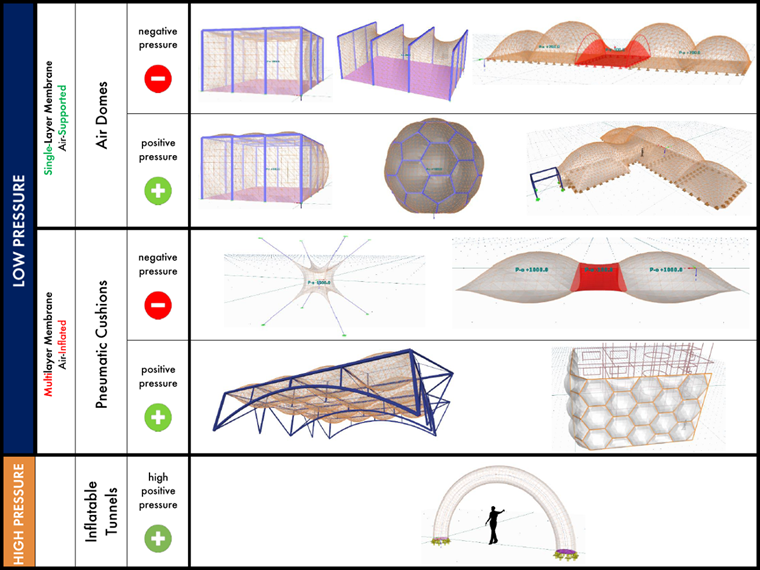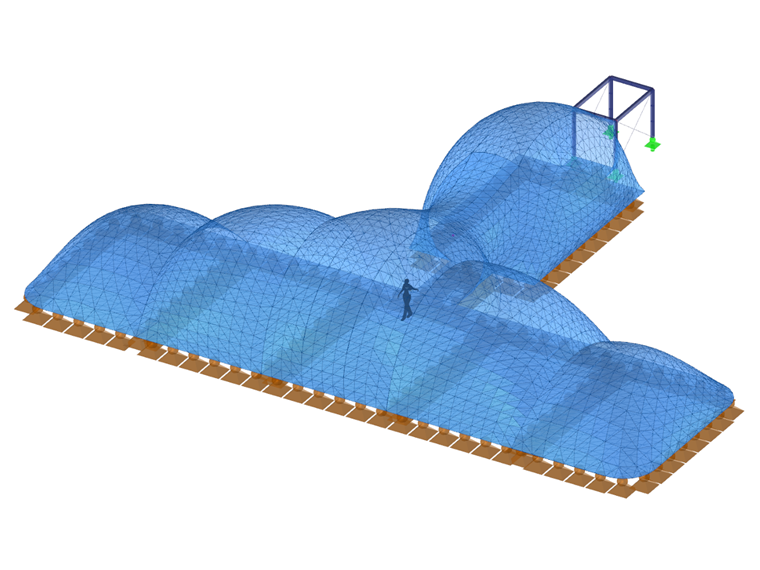A pneumatic structure is a membrane structure consisting of inflated air volumes. This type of structure is extremely lightweight. An internal pressure prestresses enveloping membranes that are subjected to tension and thus counteracts the external loads. Membranes usually consist of ETFE foils.
Fundamentally, we can distinguish between the air-supported single-layer membrane structures and the air-inflated multilayer membrane structures. Since other substances are also used as the supporting medium in some cases, the terms "medium-supported" and "medium-filled" are also used.
In the case of single-layer membrane structures, often referred to as air halls, the increased internal pressure (overpressure) in the entire hall interior counteracts the atmospheric air pressure.
In the case of multilayer membrane structures, often referred to as pneumatic cushions, at least two membrane layers surround the enclosed air volume. The membranes are prestressed and stabilized by the overpressure or underpressure available in the air volume. Such structural systems are called low-pressure systems, because the required overpressure or underpressure in the enveloped air volume is rather low, with the maximum of about 1,000 Pa. The counterpart to these are hose structures (high-pressure systems).


